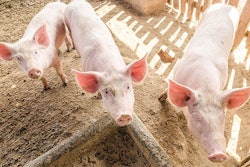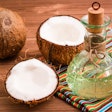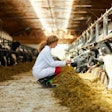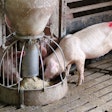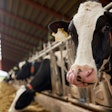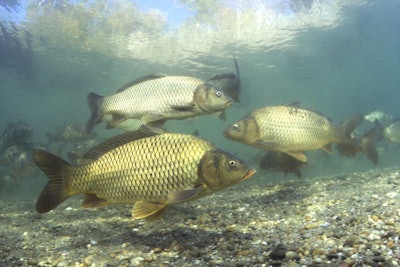
To support the South Asian island nation’s growing aquaculture sector, a new feed mill has been officially opened.
As a key step in the promotion of the aquaculture sector in Sri Lanka, feed milling equipment has been installed at the Ekala Fish Food Factory.
Donated by the United Nations’ Food and Agriculture Organization (FAO), the feed mill has an hourly capacity of 500 kg, reports Colombo Page. It will make use of discards and waste fish from the nearby fish market at Peliyagoda, a suburb of the island’s commercial capital, Colombo.
Last week, the new facility at Ja-Ela was officially opened by the Minister of Fisheries and Aquatic Resources Development Douglas Devananda, and State Minister Sanath Nishantha Perera.
Coinciding with the inauguration, the Ministry of Fisheries and Aquatic Resources Development launched a new project to produce the nation’s aquaculture feed requirements locally. Surplus output may be exported.
In the meantime, Sri Lanka’s government is considering measures to increase the protection of the country’s fish and aquatic resources. New regulations aimed at preventing the disposal of potentially harmful wastes and the destruction of the mangrove ecosystem have been debated in Parliament, reported Daily News last month.
Sri Lanka’s aquaculture sector
Latest figures — for 2017 — from the FAO put Sri Lankan aquaculture output at more than 28,000 metric tons (mt), valued at an estimated US$61.7 million. In volume terms, more than 80% of the total is freshwater finfish (carp and tilapia), and marine shrimp farming produced a further 16%. By species, the largest production was tilapia (15,200 mt), various carp (4,700 mt), and shrimp (Penaeus monodon; 4,600 mt).
Production in 2017 was around three times the level achieved in 2011-12. According to the FAO, growth has been achieved particularly in the export of marine products, such as shrimp, tuna and ornamental fish.
Aside from shrimp farming, there is very little commercial-scale aquaculture in Sri Lanka, according to the FAO. This is despite having the freshwater and brackish/marine water conditions that are optimal for the development of the sector.
Output from aquaculture is dwarfed by the country’s capture fisheries production, which the FAO put at more than 504,000 mt in 2017.
Potential for aquaculture growth
In 2018, Daily News reported that the Sri Lankan minister responsible for fisheries and aquatic resources had pledged to implement a five-year plan to develop the aquaculture sector as the country’s major foreign exchange earner.
A study in the same year identified the potential for the development of offshore mariculture in cages around the Sri Lankan coast. As well as contributing to the national economy, this would provide employment in rural areas, it was concluded. In the paper published in Fisheries Journal, author Manoharan Naveenan reported that conditions are most suitable for small-scale development. Furthermore, proper management will be needed to prevent over-development that led to the near-collapse of the country’s shrimp industry in the past.
In 2016, Sri Lankan poultry farmers were switching from home-mixing feeds for their birds to the purchase of commercial feeds. This move was attributed to a local shortage of feed ingredients.



